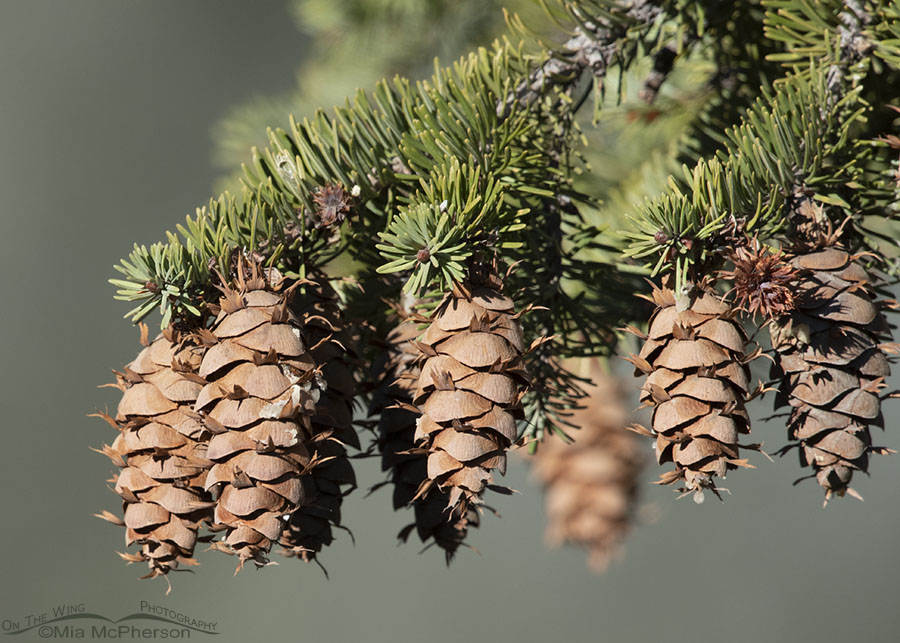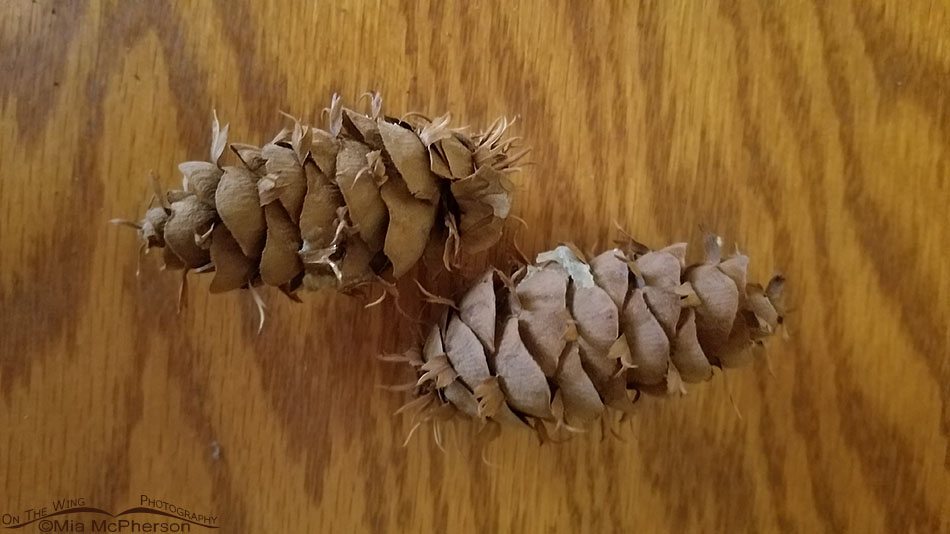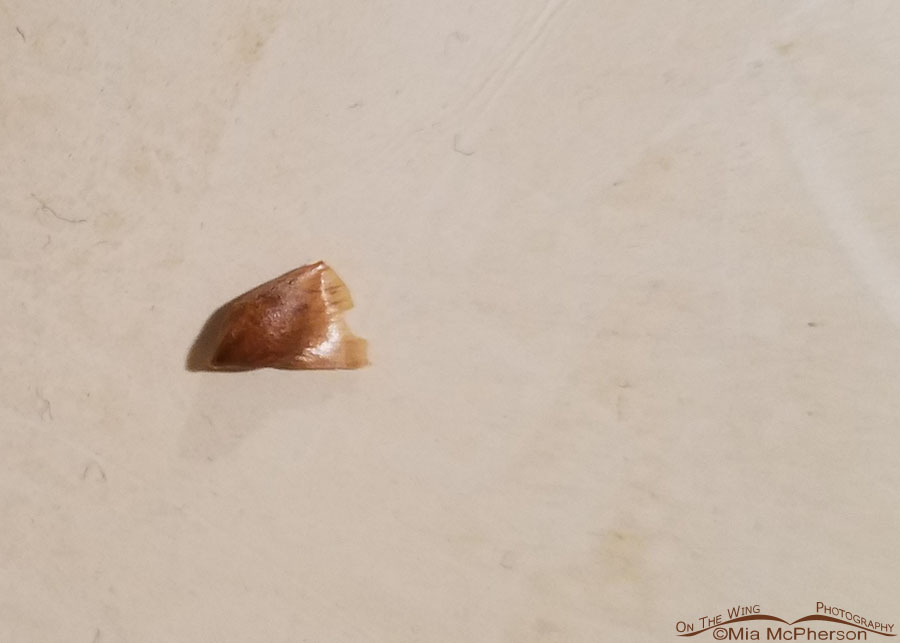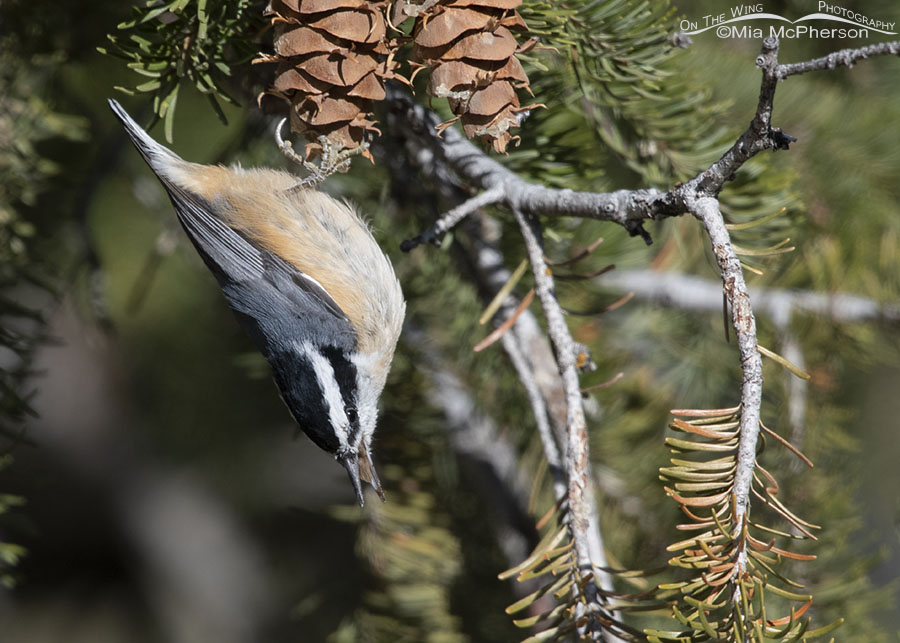 Douglas Fir cones
Douglas Fir cones
When I was out in the sky island mountains of the West Desert of Utah a few days ago I was again met with virtual silence in and around the Douglas Firs that are there.
I heard one note of a call from a Red-breasted Nuthatch. I saw a few Dark-eyed Juncos. I neither heard nor saw Mountain Chickadees, Pine Siskins or White-crowned Sparrows.
This time of the year the bird activity near and in the Douglas Firs should be hectic as the birds feed and cache the seeds of these firs. In the past few months I have written about my concerns regarding the seed production of the firs because of our drought conditions and the fact that quite a few of the birds here depend on the seeds of the Douglas Firs.
Note: The scales of the Douglas Fir cones opened later in the season this year than they normally do and the scales must be open for the birds to extract the seeds. I mentioned that in previous posts about the firs this year here and here.
This year the birds aren’t feeding on the seeds of these particular fir trees and I believe that is directly related to the extreme drought conditions we had during the period of seed production for the firs.
 Douglas Fir cones at home – Cell phone photo
Douglas Fir cones at home – Cell phone photo
I decided while I was out in the field to bring three cones home with me so I could look at them more closely and attempt to see if the seeds were harvestable and viable. The photo above is of two of those cones.
I lifted the scales of the cones with my fingernails. I looked and looked for seeds. I found only a few that were plump, probably viable, and may contain enough calories for the birds.
 Douglas Fir seed
Douglas Fir seed
The photo above shows one of the fir seeds.
I worked hard at finding the plump fir seeds in those three cones and finally I gave up when I didn’t find many.
The birds may have given up too. Looking for and extracting seeds requires them to use their precious energy reserves and if they are met with fewer seeds or seeds that have shriveled due to the drought in the Douglas Firs they might have moved on to other food sources that are easier to find.
 Upside down Red-breasted Nuthatch eating a Douglas Fir seed
Upside down Red-breasted Nuthatch eating a Douglas Fir seed
I may have figured out why I am not seeing or hearing the birds near the Douglas Firs in those mountains but that hasn’t alleviated my concerns for the survival of those birds this winter. Without the important food source the Douglas Firs normally provide them I have to wonder what the impact on the birds will be. It is not like there are any bird feeders nearby.
It is disconcerting and sad to be in those mountains and not see or hear the birds that should be there.
Mia
Click here to see more of my flower, shrub and tree photos. Click here to see more of my Red-breasted Nuthatch photos plus facts and information about this species.
Conifers – especially Doug-firs – are suffering from drought


Very scary stuff. Hopefully this winter will be long, wet and restorative. As you know, CA has been suffering with its own 4 Horsemen of the Apocalypse. Between our historic drought, demonic bark beetles, catastrophic fires and (I gotta say it) government mismanagement…it’s a wonder we have any forests left.
Fascinating study Mia. Thanks.
I add my note of appreciation for the level of detail. After your last post, I collected some fir cones here in Northern California, but I didn’t know how to check for the seeds. The die-off of Doug fir in our region is shocking and appears drought related. Very sad.
It is nice to see a basic photo study of observations. The interaction of two linked species. Without the usual making it about blaming someone for the climate.
Scary….
Drought is a killer. I so hope that your birds find alternative food – but worry.
How sad!
Thanks for posting. The casual observer, just driving or perhaps even hiking by, would not notice the loss of almost all the food source in these trees. Here’s hoping for many restorative healthy growing seasons ahead!